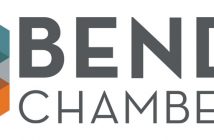Over the past twenty years, a variety of different development models have become popular in the information technology industry because of their ability to increase efficiency, reduce costs and time delays, and help developers integrate end-user feedback into the final product.
Some development methodologies, like Agile and Lean, focus on creating a minimum viable product and releasing basic software to customers as soon as possible to solicit feedback. Other models, such as Waterfall and V-shaped, focus on increasing efficiency through the implementation of sequential steps that prevent time delays and cost overruns.
The sheer amount of information available about these different approaches to software development can be overwhelming for first-time project managers. This guide will help executives understand how each software development methodology approaches the development process and what benefits each method might offer for their business.
For those who are still unsure about which style is best suited for their business, reach out to a software outsourcing or experienced consultant for their expert advice before launching the initiative.
Software Development Life Cycle
When first considering a software development project, it is important that managers and hands-off stakeholders alike ensure that they understand the basics of the software development life cycle (SDLC).
Regardless of the development methodology chosen, an in-depth understanding of the SDLC is vital. It ensures that managers can effectively supervise the process and that the right experts are brought-in during the most challenging phases of the project.
The SDLC typically begins with a conceptualization phase, which requires executives, stakeholders, related departments, and end-user representatives to come together to determine the problem that the new software will solve, as well as detail exactly how this software will address consumer demands.
Next, the engineering staff is brought on-board to help leadership integrate these ideas into a realistic software development plan and to estimate total costs and project deadlines.
Outside programmers may be brought in during the next step to assist with the development itself, writing code and helping to keep the project on track. The project will then enter the quality assurance and testing stage, a crucial juncture where the software is tested for functionality, bugs, and consumer data security.
Only once these steps are completed is a product finally brought to market and released to end users. Each of the software development methodologies investigated below uses different approaches to the SDLC and comes with its own unique set of pros and cons.
Agile
The Agile method is by far the most popular software development approach used in the technology industry today.
Originally created in the 1990s and formalized in the early 2000s, this methodology focuses on creating a minimum viable product that can be released to customers as soon as possible. This differs from traditional approaches that focus on building a well-developed, extensive piece of software before allowing customers to use the product.
The benefit of this new approach is that companies can receive user feedback early in the process, helping them avoid unnecessary features, concentrate resources on the most popular components, and change directions before too much time or money has been sunk into the initial idea.
Software engineers working under the Agile methodology focus on creating a bare-bones product during the first month or two of the initiative, releasing the first iteration to customers with the minimum amount of features and design work.
The constant stream of end-user feedback helps to inform the development team’s priorities, ensuring that the final software meets customer needs in every way. An Agile methodology is an ideal option for budget-restricted startups and new software products with unknown market potential.
One of the major drawbacks associated with the Agile development method is the lack of structure and the presence of rigid deadlines. This approach is known to produce impressive, customer-centric software that truly addresses end-user pain points.
However, the very nature of the process tends to result in missed deadlines and cost overruns as developers respond to customer feedback and change priorities multiple times throughout the SDLC. Companies may benefit from hiring an experienced project manager or software outsourcing service to help with daily supervision and to ensure that the initiative remains on-time and under-budget.
Lean
The lean software development methodology is unique because its origins derive from a set of manufacturing processes, not from the information technology industry.
The lean system, created in the 1980s, was initially known as the Toyota Production System and is a manufacturing approach that focuses heavily on eliminating inefficiencies and minimizing waste throughout the production process.
The popular book Lean Software Development introduced the concept to the tech world and the system has become incredibly popular with a range of companies, and with startups in particular.
The 7-step system concentrates on eliminating waste, empowering workers to identify potential problems and proactively offer solutions, and soliciting customer feedback throughout the entire SDLC.
Like the Agile methodology, this approach helps businesses develop high-quality software that meets customer needs by producing a minimum viable product as soon as possible and by integrating end-user feedback into every iteration.
This type of model is particularly useful for startups who are still trying to gauge the market and for companies intent on releasing a revolutionary product that addresses previously unknown customer needs.
Like its Agile counterpart, the main challenge associated with the Lean methodology is the lack of structure. While the fluid nature of the process helps software engineers integrate key information into the product throughout its development cycle, the lack of structure often causes these initiatives to run over schedule and to exceed their initial budgets.
In addition, this type of approach requires an experienced, process-oriented project engineer who can ensure that the project remains focused and that user feedback is integrated without radically altering the initial vision for the software.
Waterfall
The most popular linear software development methodology in use today, the Waterfall approach emphasizes the need for structure throughout the entire SDLC. This cascade-type model ensures that projects remain efficient and on-time by forcing development teams to work through a sequential set of steps before a product is released to market.
Waterfall projects will always begin with a conceptualization and planning stage before the development team builds the software itself. Formal quality assurance and testing follow this step before the finalized software is released to end users.
This approach can be the ideal solution for first-time project managers and companies without a great deal of institutional knowledge about the software development process because all of its steps and requirements are well-documented and easy to follow.
In addition, hands-off managers often prefer this approach because its clearly-defined stages help executives easily measure progress and identify roadblocks during every step of the cycle.
Lastly, this particular approach can help reduce development costs and allow managers to easily augment their staff and utilize software outsourcing partners during the most difficult stages of the SDLC.
The biggest drawback associated with the Waterfall development model is the lack of end-user input throughout the process. The reason that Agile and Lean methodologies have become so popular is because they enable businesses to ensure that their software meets all customer needs while avoiding unnecessary investments in unwanted features.
The rigid structure of the Waterfall approach means that projects will usually finish on-time and under-budget, but the final product may not truly resonate with customers and may be overtaken by a more on-the-nose rival software.
V-Shaped
The V-shaped software development methodology is closely related to Waterfall, in that it focuses on creating a highly-structured software development cycle that seeks to develop a highly-functional piece of software before an iteration is released to end users.
This linear approach to software development allows companies to standardize the development cycle and introduce a degree of certainty into their upcoming initiatives. Under the V-shaped method, each step of the SDLC only begins once the previous step has been completed in full.
This approach begins with an initial conceptualization and planning stage before the development team is tasked with creating the final product and conducting quality assurance and testing. Only once the software has been completed and executive approval has been granted does the first customer have access to the product.
The ability to develop a piece of software with predictability and efficiency is the main reason that this method is used so widely in the medical device industry. It is also preferred by hands-off managers because of its clear milestones and easy ability to assess progress during each step of the SDLC.
The most common challenge associated with the V-shaped software development methodology is the lack of flexibility. Because of the highly-structured nature of this approach, end-user feedback may not be received until it is too late to integrate their suggestions in the final product.
This means that while this method may be ideal for straightforward development initiatives, it may not be appropriate when working with new and unproven technologies.
Choosing the Right Model for Your Business
Once managers have a clear conception of the SDLC and the capabilities of each of the most popular software development methodologies, they can make an informed decision on the best approach for their particular project.
Both small and large companies alike have embraced the fluid nature of the Agile and Lean methods for difficult projects, which allow developers to integrate end-user feedback through the process–often resulting in a stronger final product with greater profit potential.
However, the unstructured nature of these approaches requires an experienced project manager who can keep the initiative on-track and avoid dreaded cost overruns and missed deadlines.
Alternatively, companies who are developing straightforward products with a solid precedent, such as medical device, financial, and other simple software, may opt to work under a more structured development method such as Waterfall or V-shaped, since both of these approaches help keep projects on track and avoid unnecessary delays.
Managers who find themselves unsure of how to proceed may be best served by working with a software outsourcing company or experienced consultant who can help them assess their internal capabilities and select the right approach for their goals.





